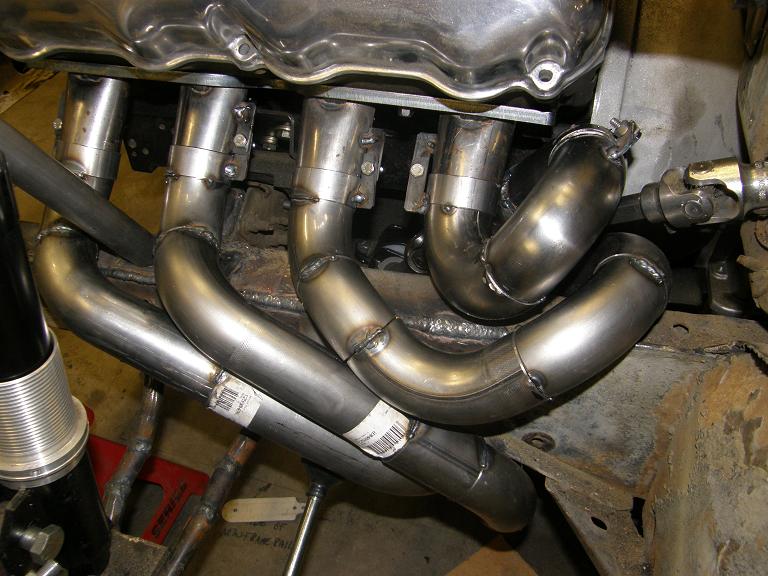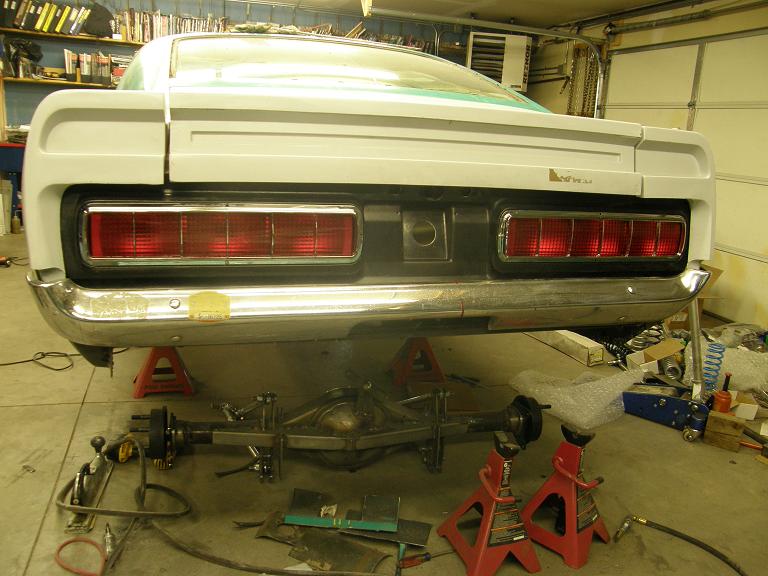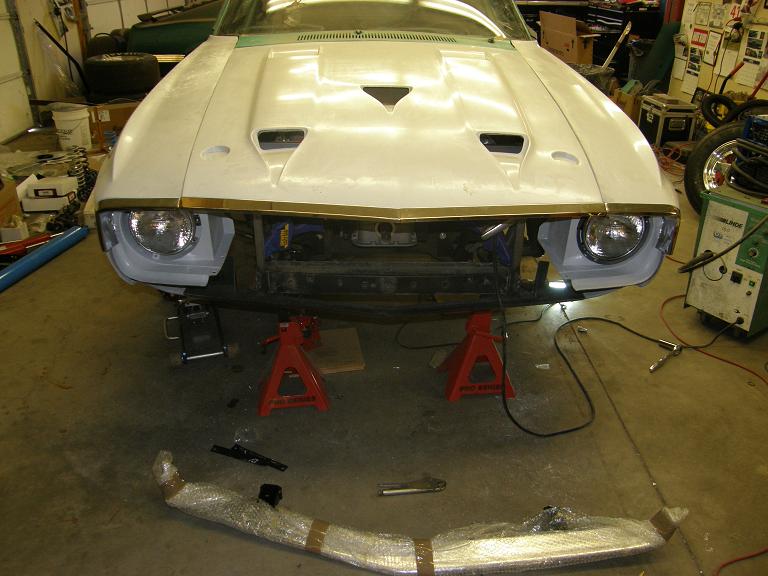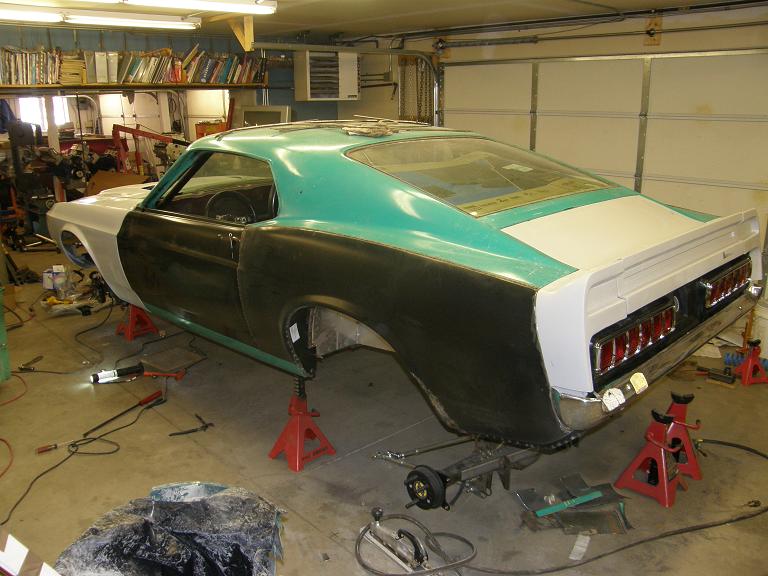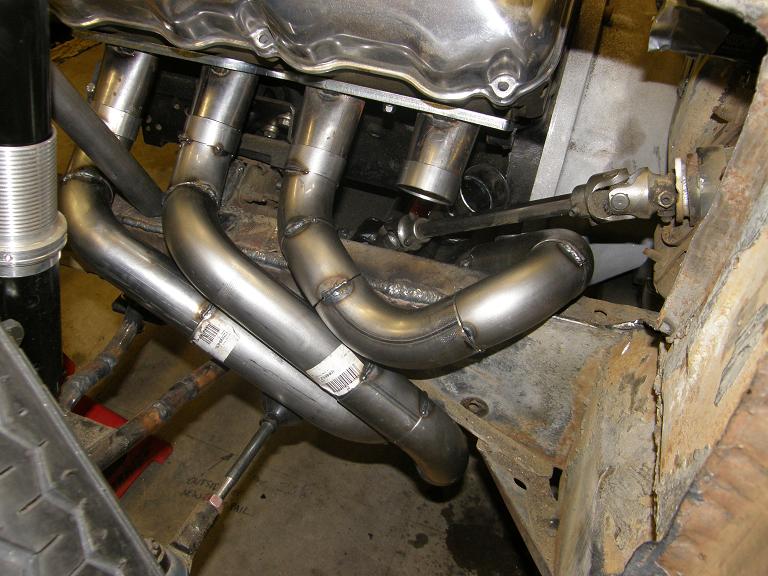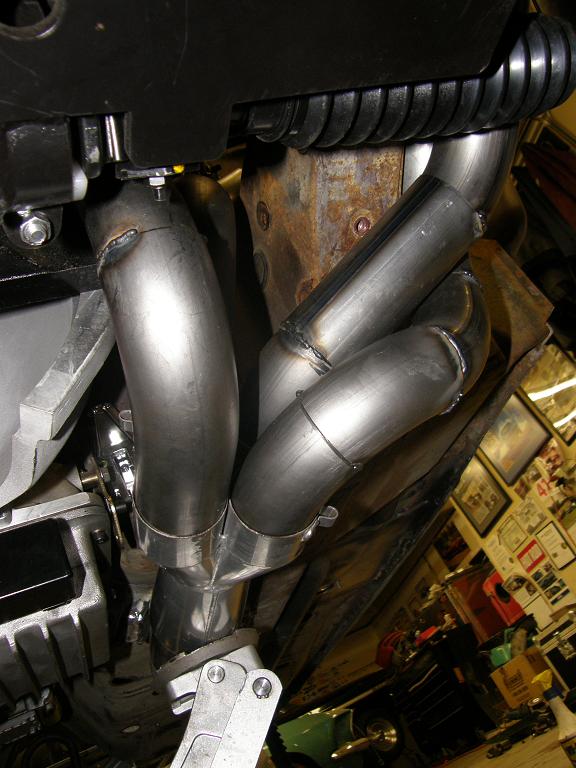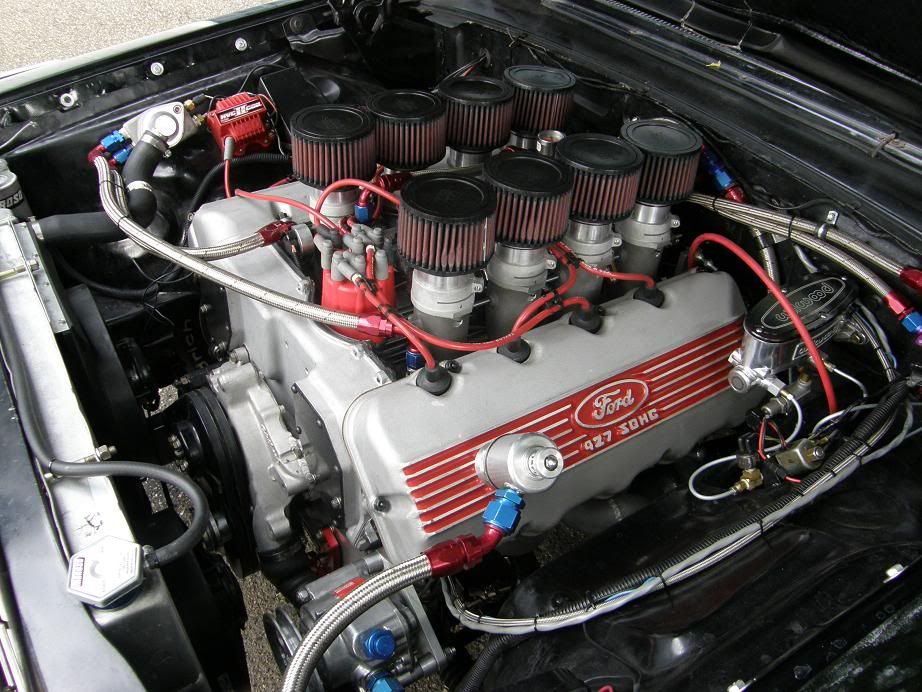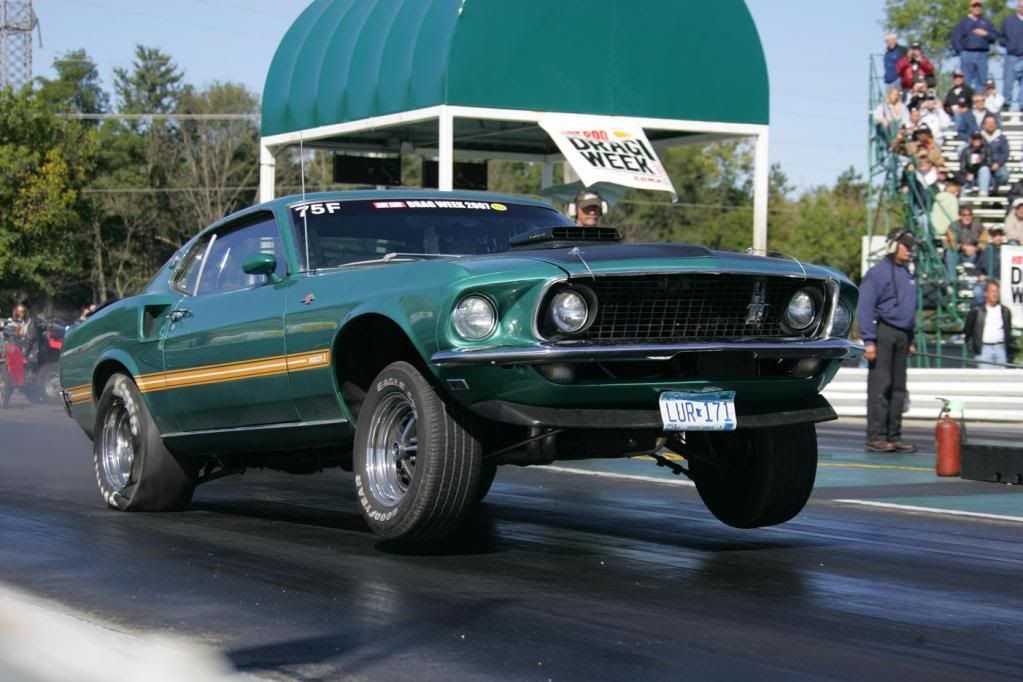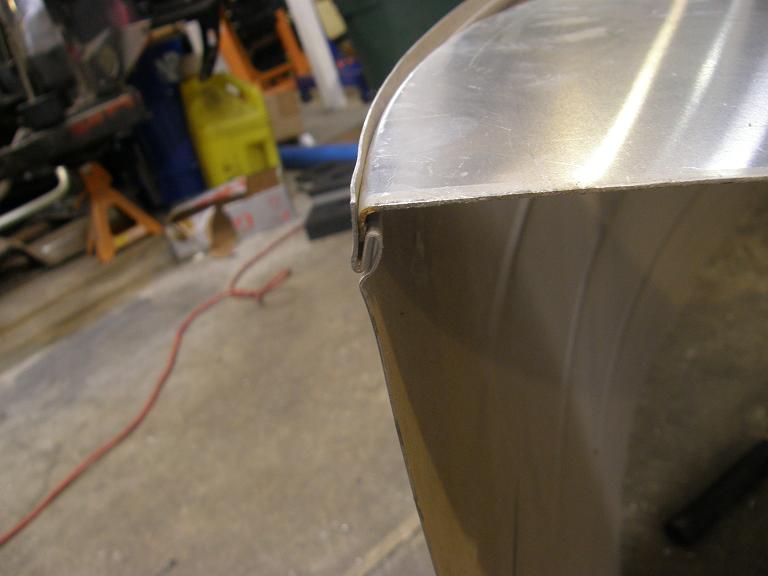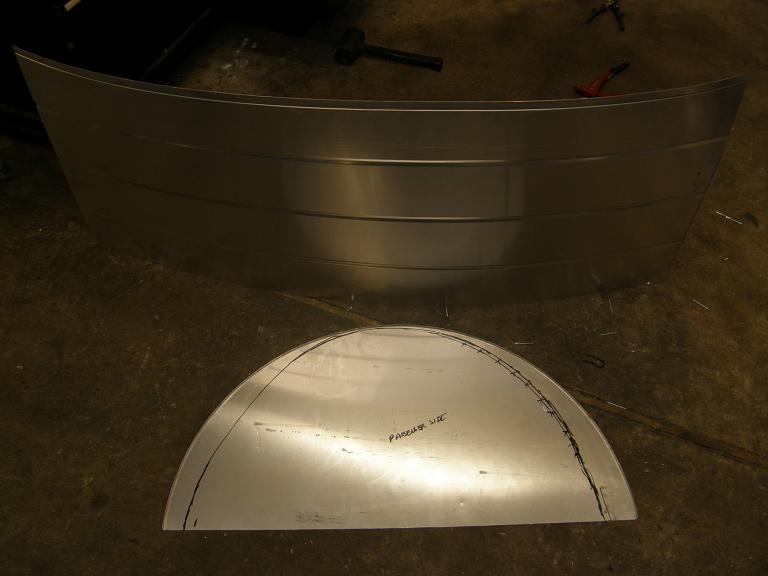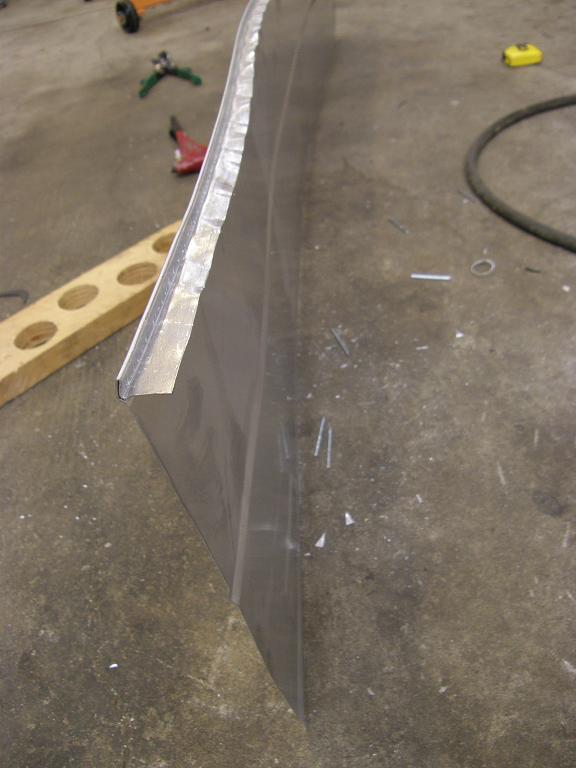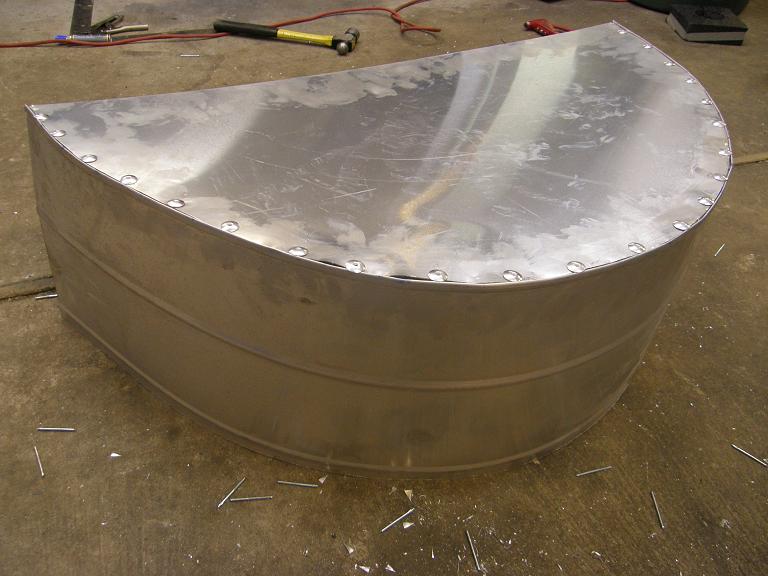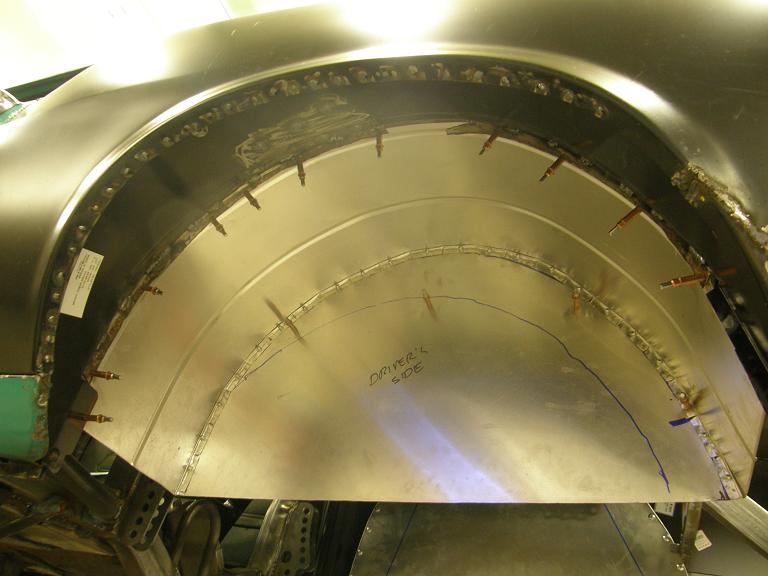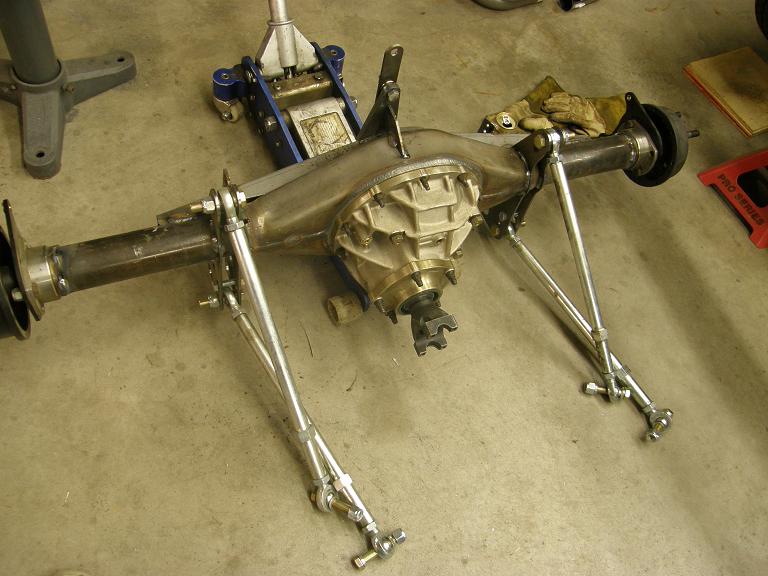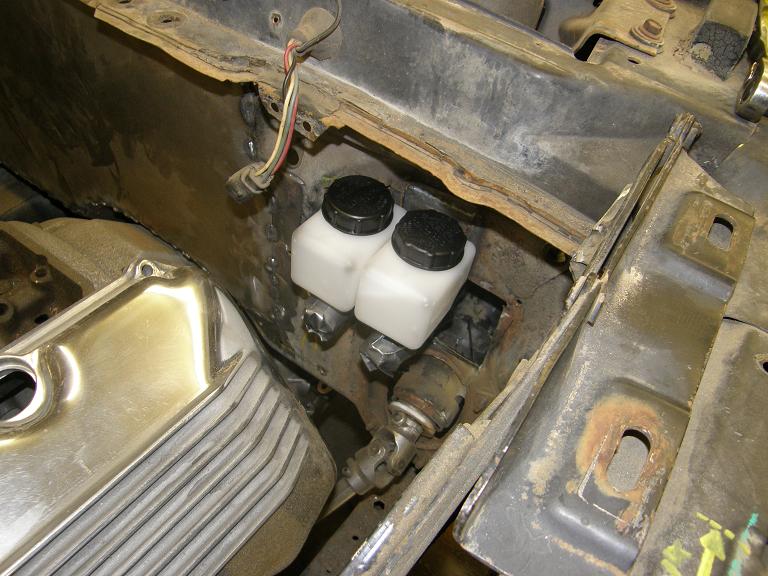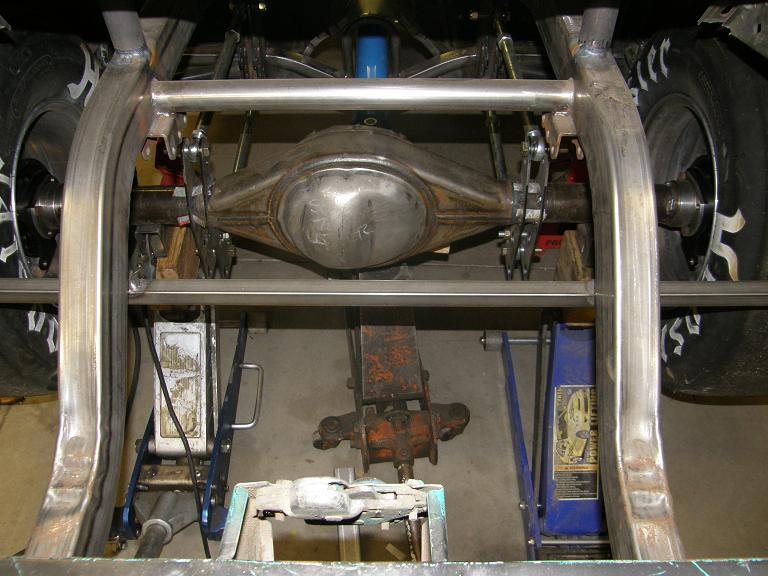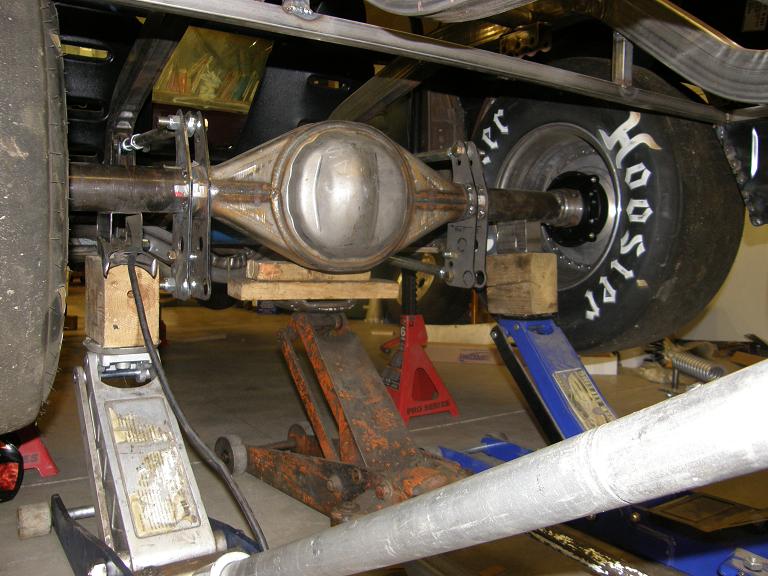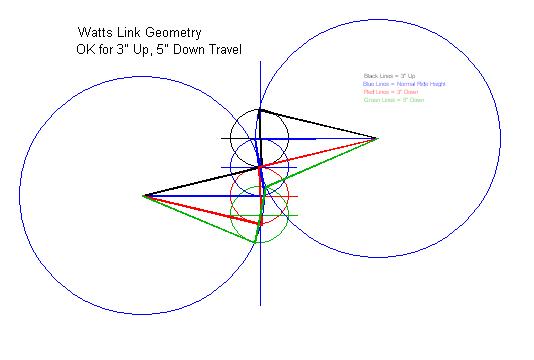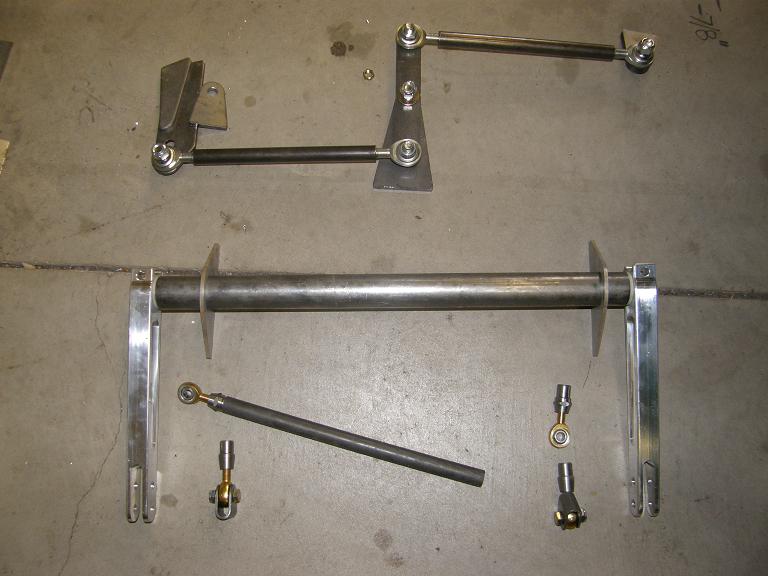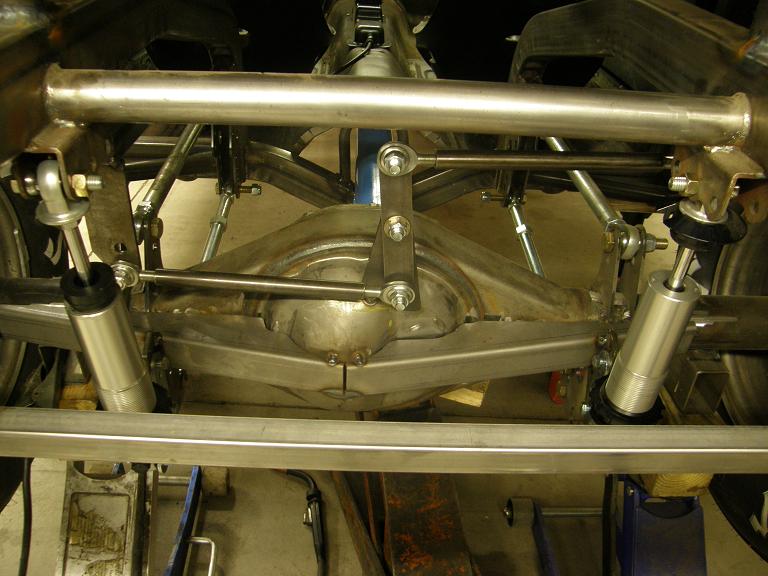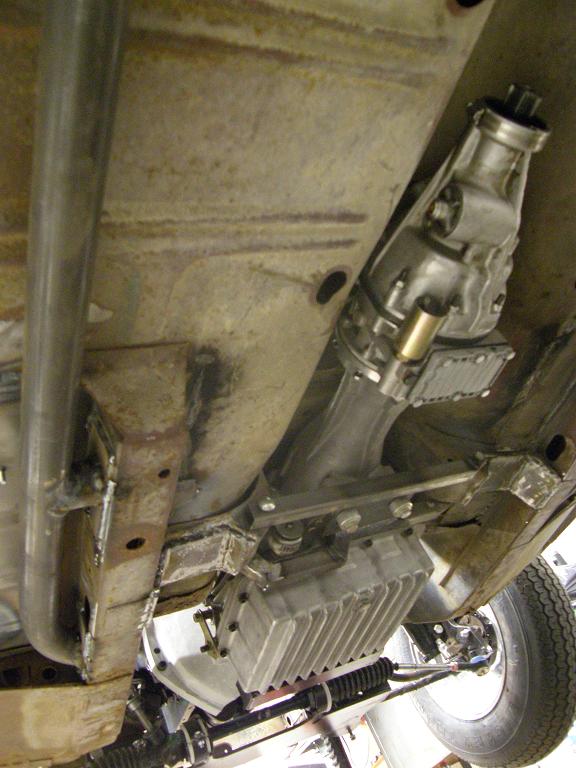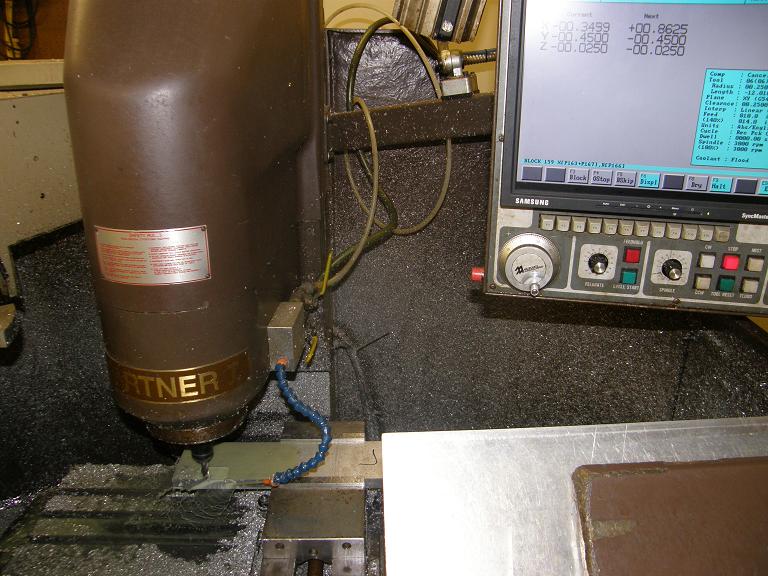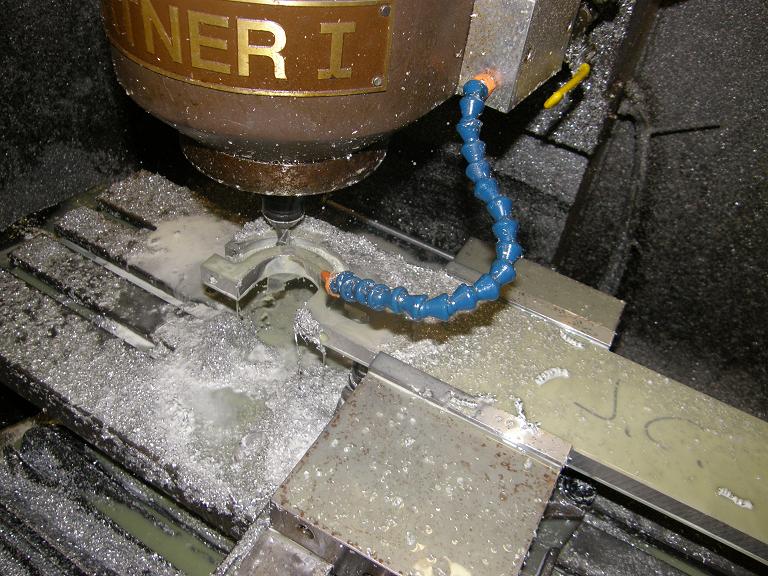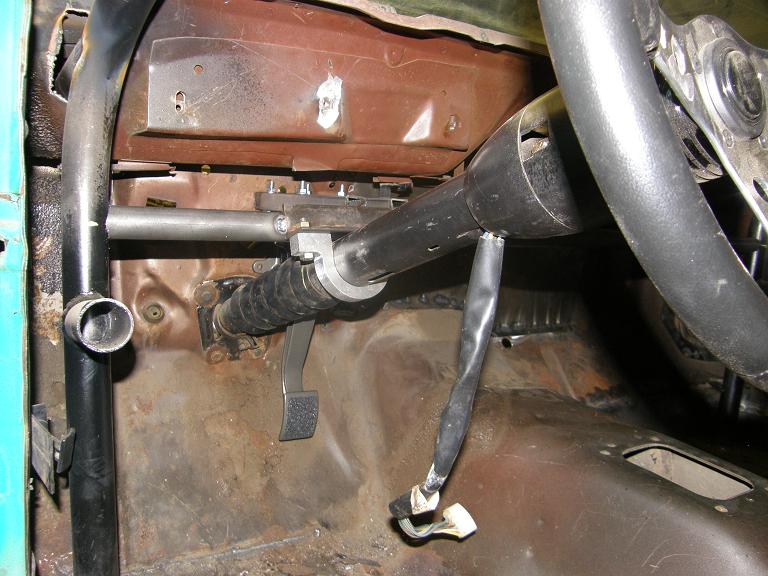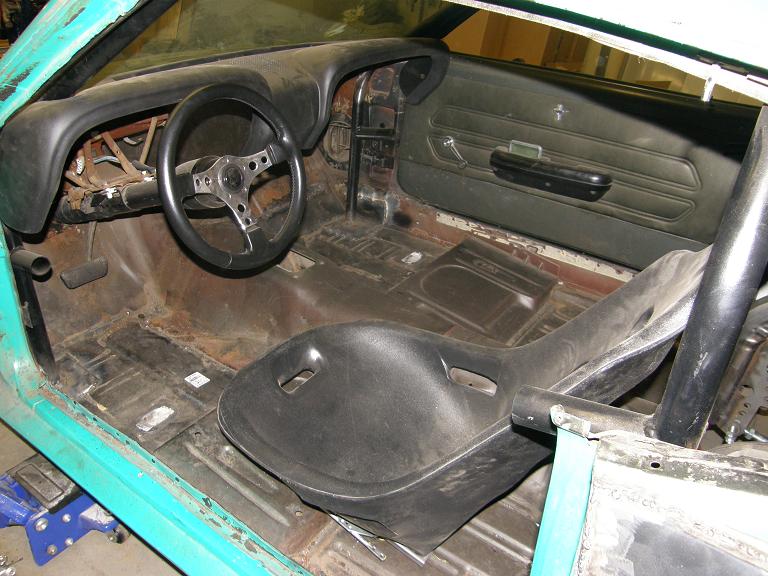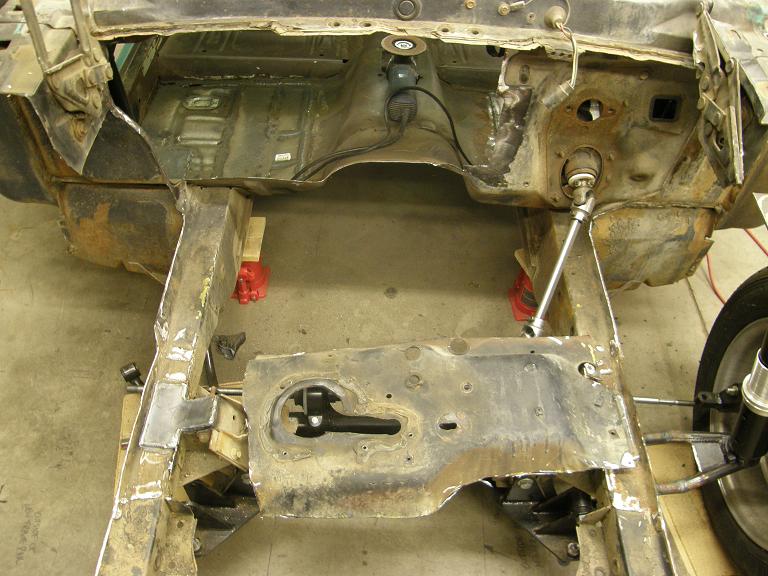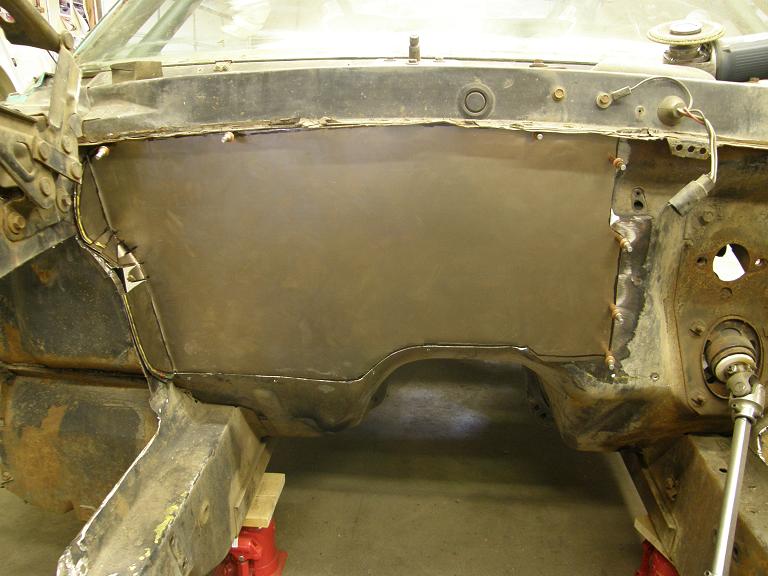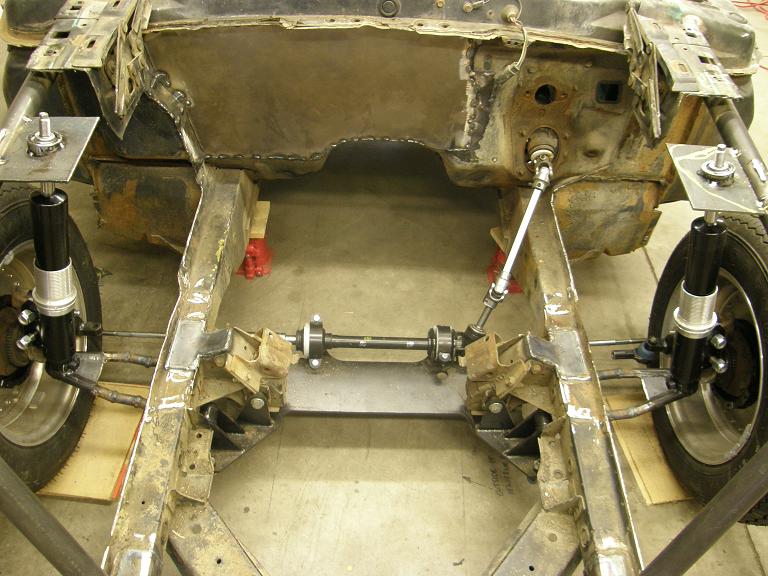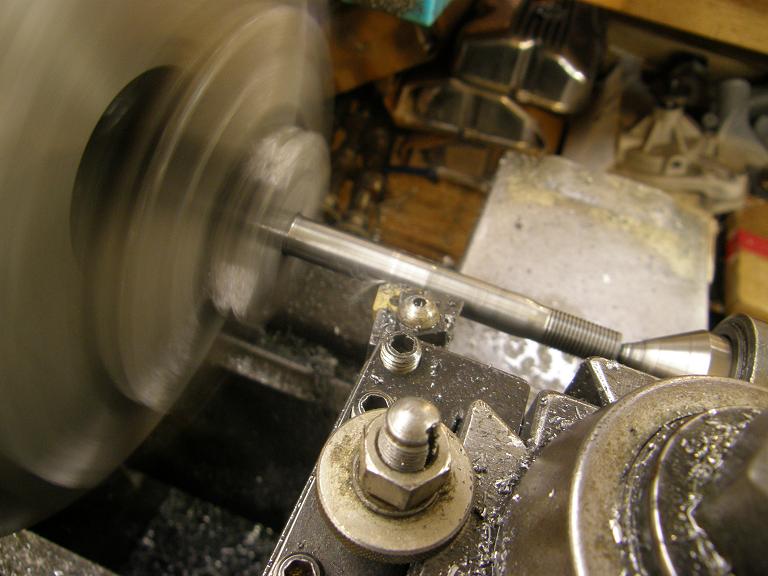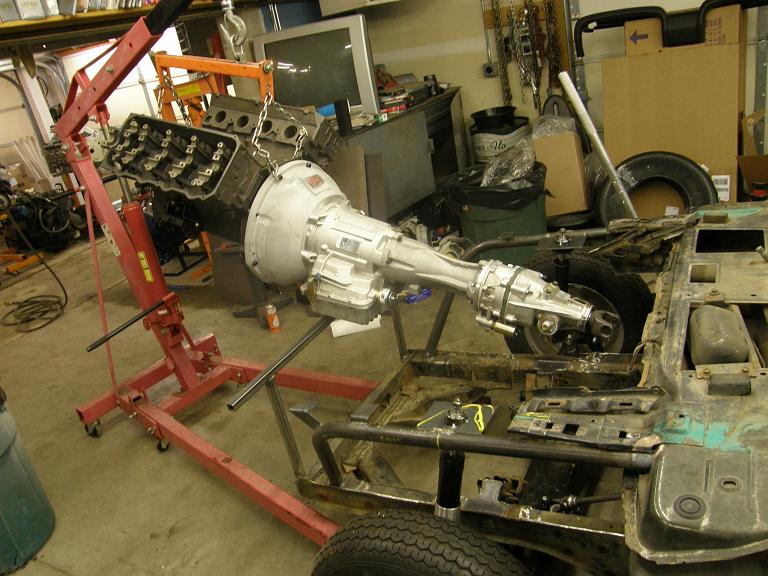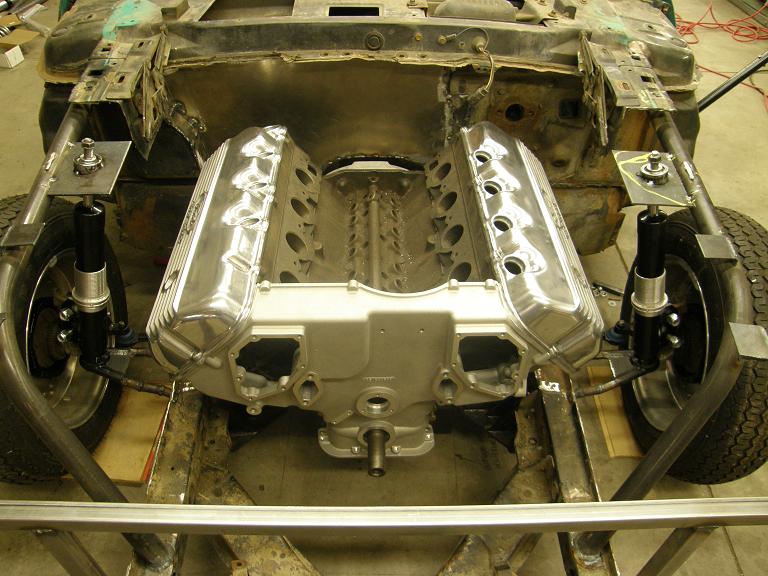7381
The Road to Drag Week 2011 / April 3, 2011 - The Road to Drag Week 2011
« on: April 03, 2011, 09:51:03 PM »
I made more progress on the car this week, although I wasn't able to work on it for any more than a few hours at a time this week. Fortunately, I had a couple of good weeknights where I made some progress, and I found some parts I'd been looking for, which made the work a little more productive.
On Monday night I was looking on ebay for the rear trim for a 69 Shelby, that goes on the trunk lid and quarter panel end caps. This trim had been hard to find in the past, so I was surprised to see a company on ebay advertising parts for these cars, and they had the trim I was looking for. They are some kind of a Shelby restoration outfit in Green Bay Wisconsin, and in addition to the rear trim items they also advertised the front bumper brackets that are specific to 69 Shelbys. I had been planning on fabricating these brackets from stock Mustang parts, but this was going to take some time, and given that I'm always behind schedule on these projects, I figured it would be a plus if I could just buy the brackets and bolt them on. So, Tuesday on my lunch break I gave the company a call and ordered the parts.
Tuesday night I had a free night out in the shop, so I continued working on getting the front end of the car put together. I had to build some brackets to help hold the fiberglass fenders and headlight buckets in the correct position, and they had to be adjustable so I could twist the parts around and check the alignment, then move them again if they weren't right. After a few hours on Tuesday night I finally had the brackets fabricated, and had the fender positioned so I could install the fiberglass panels that bridge the gap between the fenders at the front of the car. The car looked a lot more complete with these panels in position.
Thursday my parts came, so I was back out in the shop Thursday night, and bolted on the front bumper brackets. Unfortunately, the bumper wouldn't fit on the brackets, and after examining the situation a little I noticed that the problem was the driver's side front frame rail, which seemed to have a bow or pucker in the sheet metal that caused the driver's side bumper bracket to angle outboard a little, instead of coming straight out so it would align with the bumper. A little work with a hammer and the torch resolved that issue, and I finally got the bumper installed after the modifications. I spent the rest of the evening Thursday getting the grille trimmed so it would fit around the headlight rings and bolt into the correct position.
Finally on Friday night I worked on getting the hood hold downs installed. The hood pins came with brackets that bolt onto the front fenders under the hood. I cut the holes in the fiberglass hood, bolted on the hood pin brackets, closed the hood and looked through the holes, and saw they were misaligned by a good half inch. Seems like every bit of this fiberglass related stuff has to be custom fit or modified in some way. After screwing around with this for a while I finally concluded that the only way to make the hood pins fit into the brackets was to shorten the brackets, so I cut them in half on my bandsaw, took out a half inch, and welded them back together. By the end of the night I had the hood pins installed, and had re-tweaked the front end to get everything into alignment as much as possible. Here's some photos of the front end, and also the back end of the car with the trim pieces on the trunk lid and end caps set into position:



Saturday morning I had to be at work, but I got back out to the shop on Saturday afternoon for a few hours. My plan had been to try to finish up the roll cage stuff on Saturday, such as installing the swing out side bars, welding on the tabs for the seat belts, etc. But I just didn't feel like doing that; I was kind of pumped up to get to work on my new intake manifold. So I decided to start on that project instead, and leave the rest of the roll cage work for later. The first thing I had to do with the intake was to make a jig to build it on. I had previously built a couple of sheet metal intakes, using dummy engines to get everything fixtured properly, but there were limitations to using this approach. First of all, getting the bottom half of the runners welded up while the manifold was bolted to the engine was practically impossible, so in the past I'd welded around the top half of the runners, and then removed the manifold from the engine to weld the bottom half. This always caused the manifold to warp, so significant other work then had to be done to get the manifold to bolt onto the engine properly and seal to the cylinder heads. I figured I would build a jig to eliminate this problem, building the jig so that the bottom was open, and after the top half of the runners were welded, I could just flip the whole jig upside down and get at the bottom side of the runners more easily. I'm not a particularly skilled aluminum welder, and for me access to the weld is really important if I'm going to do a decent job, so I figured a jig like this would make it a lot easier for me to build the intake.
The other advantage to the jig is that I can take advantage of my powder coating oven to pre-heat the manifold prior to welding. This always makes aluminum welding go easier in my experience, but there is no way I'm going to horse a block and cylinder heads into the powdercoat oven for preheating. Using a jig would make that job a lot easier.
The manifold I'm building was originally conceived about two years ago, and I purchased all the materials I needed then, including the steel for the jig. I used 1/4" wall 2X3 rectangular steel tubing to make a framework for the jig, plus some 3/8" thick angle iron to form the flanges that the intake would bolt to. After digging these materials out, the first thing I had to do was to drill the holes in the angle iron that the manifold would bolt to. In addition to the five holes for the manifold bolts, I also decided to add another 10 bolt holes for some 1/4" bolts that would add further support to the manifold's intake flanges, and help prevent warpage when welding. With 15 bolt holes for each piece of angle iron, I decided to set the angle iron up on my CNC machine and drill the holes on that. Took me about an hour to get set up and drill the holes in the first piece, and by then I had to leave the shop until later due to some family obligations. Later that evening, I got back out to the shop and got the other piece of angle iron drilled. Then, I had to tap all 15 holes in each piece of angle iron so that the manifold would bolt on. My CNC machine doesn't do a good job tapping, and tends to break the tap more frequently than it actually taps the hole, so I had decided to tap all the holes by hand. This pretty much burned up the remainder of the evening, and I was only about half way through the second piece of angle iron with the tap.
Sunday morning again I had a few hours, so I got out to the shop early, finished tapping the second piece of angle iron, and got set up to weld the jig together. I wanted to make sure I kept it as flat as possible during the welding operation, so I cleared off my 24" granite surface plate (which I never use as a surface plate anyway), and set the four pieces of rectangular tubing up on that. After welding them together using some caution to avoid overheating any one particular area. I grabbed one of my stock SOHC intake manifolds and bolted the angle iron pieces to that, then set up that assembly on the rectangular tube base. After I got it where I wanted, I carefully welded the angle iron to the base. At this point the jig with the manifold installed looked like this:

With the intake firmly fixed in place, next I used the lathe and the mill to make a piece of steel tube that welded onto the frame of the jig, to correctly position the distributor hole in the manifold. After welding the tube in place the front of the jig looked like this:

At that point it was around 1:00, and I had more family stuff to attend to, but after dinner at 6:00 I got a couple more hours out in the shop. The flanges for the intake manifold had already been laser cut back in 2009, before I'd acquired my CNC mill. However, the flanges hadn't been cut for the additional 10 holes that I'd put in the angle iron part of the jig, to help hold the flange flat during welding. Since I already had the program on my CNC for the holes I'd put in the angle iron, I just set the flanges up on the machine with the same zero point, and drilled the holes with a larger bit so that the 1/4" bolts would fit through. Here's a pic of one of the flanges on the CNC machine:

After I got the flanges modified, I removed the factory manifold from the jig and bolted on the flanges. Then I test fit the manifold floor in place on the jig. Pictures below:


So, I think I've got a good start on the manifold now. Next week I hope to get the tubes cut and welded, and the general shape of the manifold mocked up. I'll post another update next Sunday night.
On Monday night I was looking on ebay for the rear trim for a 69 Shelby, that goes on the trunk lid and quarter panel end caps. This trim had been hard to find in the past, so I was surprised to see a company on ebay advertising parts for these cars, and they had the trim I was looking for. They are some kind of a Shelby restoration outfit in Green Bay Wisconsin, and in addition to the rear trim items they also advertised the front bumper brackets that are specific to 69 Shelbys. I had been planning on fabricating these brackets from stock Mustang parts, but this was going to take some time, and given that I'm always behind schedule on these projects, I figured it would be a plus if I could just buy the brackets and bolt them on. So, Tuesday on my lunch break I gave the company a call and ordered the parts.
Tuesday night I had a free night out in the shop, so I continued working on getting the front end of the car put together. I had to build some brackets to help hold the fiberglass fenders and headlight buckets in the correct position, and they had to be adjustable so I could twist the parts around and check the alignment, then move them again if they weren't right. After a few hours on Tuesday night I finally had the brackets fabricated, and had the fender positioned so I could install the fiberglass panels that bridge the gap between the fenders at the front of the car. The car looked a lot more complete with these panels in position.
Thursday my parts came, so I was back out in the shop Thursday night, and bolted on the front bumper brackets. Unfortunately, the bumper wouldn't fit on the brackets, and after examining the situation a little I noticed that the problem was the driver's side front frame rail, which seemed to have a bow or pucker in the sheet metal that caused the driver's side bumper bracket to angle outboard a little, instead of coming straight out so it would align with the bumper. A little work with a hammer and the torch resolved that issue, and I finally got the bumper installed after the modifications. I spent the rest of the evening Thursday getting the grille trimmed so it would fit around the headlight rings and bolt into the correct position.
Finally on Friday night I worked on getting the hood hold downs installed. The hood pins came with brackets that bolt onto the front fenders under the hood. I cut the holes in the fiberglass hood, bolted on the hood pin brackets, closed the hood and looked through the holes, and saw they were misaligned by a good half inch. Seems like every bit of this fiberglass related stuff has to be custom fit or modified in some way. After screwing around with this for a while I finally concluded that the only way to make the hood pins fit into the brackets was to shorten the brackets, so I cut them in half on my bandsaw, took out a half inch, and welded them back together. By the end of the night I had the hood pins installed, and had re-tweaked the front end to get everything into alignment as much as possible. Here's some photos of the front end, and also the back end of the car with the trim pieces on the trunk lid and end caps set into position:



Saturday morning I had to be at work, but I got back out to the shop on Saturday afternoon for a few hours. My plan had been to try to finish up the roll cage stuff on Saturday, such as installing the swing out side bars, welding on the tabs for the seat belts, etc. But I just didn't feel like doing that; I was kind of pumped up to get to work on my new intake manifold. So I decided to start on that project instead, and leave the rest of the roll cage work for later. The first thing I had to do with the intake was to make a jig to build it on. I had previously built a couple of sheet metal intakes, using dummy engines to get everything fixtured properly, but there were limitations to using this approach. First of all, getting the bottom half of the runners welded up while the manifold was bolted to the engine was practically impossible, so in the past I'd welded around the top half of the runners, and then removed the manifold from the engine to weld the bottom half. This always caused the manifold to warp, so significant other work then had to be done to get the manifold to bolt onto the engine properly and seal to the cylinder heads. I figured I would build a jig to eliminate this problem, building the jig so that the bottom was open, and after the top half of the runners were welded, I could just flip the whole jig upside down and get at the bottom side of the runners more easily. I'm not a particularly skilled aluminum welder, and for me access to the weld is really important if I'm going to do a decent job, so I figured a jig like this would make it a lot easier for me to build the intake.
The other advantage to the jig is that I can take advantage of my powder coating oven to pre-heat the manifold prior to welding. This always makes aluminum welding go easier in my experience, but there is no way I'm going to horse a block and cylinder heads into the powdercoat oven for preheating. Using a jig would make that job a lot easier.
The manifold I'm building was originally conceived about two years ago, and I purchased all the materials I needed then, including the steel for the jig. I used 1/4" wall 2X3 rectangular steel tubing to make a framework for the jig, plus some 3/8" thick angle iron to form the flanges that the intake would bolt to. After digging these materials out, the first thing I had to do was to drill the holes in the angle iron that the manifold would bolt to. In addition to the five holes for the manifold bolts, I also decided to add another 10 bolt holes for some 1/4" bolts that would add further support to the manifold's intake flanges, and help prevent warpage when welding. With 15 bolt holes for each piece of angle iron, I decided to set the angle iron up on my CNC machine and drill the holes on that. Took me about an hour to get set up and drill the holes in the first piece, and by then I had to leave the shop until later due to some family obligations. Later that evening, I got back out to the shop and got the other piece of angle iron drilled. Then, I had to tap all 15 holes in each piece of angle iron so that the manifold would bolt on. My CNC machine doesn't do a good job tapping, and tends to break the tap more frequently than it actually taps the hole, so I had decided to tap all the holes by hand. This pretty much burned up the remainder of the evening, and I was only about half way through the second piece of angle iron with the tap.
Sunday morning again I had a few hours, so I got out to the shop early, finished tapping the second piece of angle iron, and got set up to weld the jig together. I wanted to make sure I kept it as flat as possible during the welding operation, so I cleared off my 24" granite surface plate (which I never use as a surface plate anyway), and set the four pieces of rectangular tubing up on that. After welding them together using some caution to avoid overheating any one particular area. I grabbed one of my stock SOHC intake manifolds and bolted the angle iron pieces to that, then set up that assembly on the rectangular tube base. After I got it where I wanted, I carefully welded the angle iron to the base. At this point the jig with the manifold installed looked like this:

With the intake firmly fixed in place, next I used the lathe and the mill to make a piece of steel tube that welded onto the frame of the jig, to correctly position the distributor hole in the manifold. After welding the tube in place the front of the jig looked like this:

At that point it was around 1:00, and I had more family stuff to attend to, but after dinner at 6:00 I got a couple more hours out in the shop. The flanges for the intake manifold had already been laser cut back in 2009, before I'd acquired my CNC mill. However, the flanges hadn't been cut for the additional 10 holes that I'd put in the angle iron part of the jig, to help hold the flange flat during welding. Since I already had the program on my CNC for the holes I'd put in the angle iron, I just set the flanges up on the machine with the same zero point, and drilled the holes with a larger bit so that the 1/4" bolts would fit through. Here's a pic of one of the flanges on the CNC machine:

After I got the flanges modified, I removed the factory manifold from the jig and bolted on the flanges. Then I test fit the manifold floor in place on the jig. Pictures below:


So, I think I've got a good start on the manifold now. Next week I hope to get the tubes cut and welded, and the general shape of the manifold mocked up. I'll post another update next Sunday night.


 I haven't advertised the web site yet, so there's not a lot of people looking at it. Hopefully when my book is ready to ship and I start pointing people to this web site to buy it, more people will sign up on the forum. I guess we will see. I had a new member from Germany sign up a couple of days ago; I figured this was his post!
I haven't advertised the web site yet, so there's not a lot of people looking at it. Hopefully when my book is ready to ship and I start pointing people to this web site to buy it, more people will sign up on the forum. I guess we will see. I had a new member from Germany sign up a couple of days ago; I figured this was his post!
